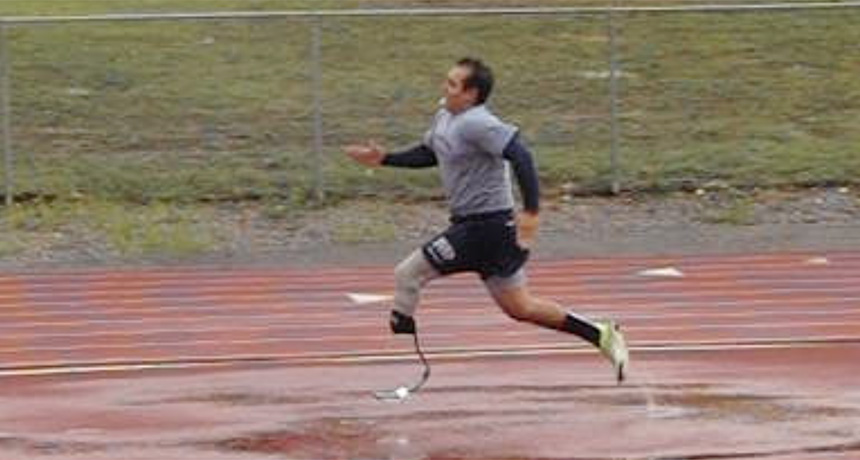How Paralympic sprinters lose speed on curves

Curves tend to put the brakes on human runners — especially those wearing prosthetics.
When navigating curves, runners must exert centripetal force to change directions, while countering the force of gravity vertically as well. They sacrifice speed in the process, and studies suggest that, in experienced sprinters, the inside leg generates less force on a curve than the outside leg.
In general, the passive, J-shaped prosthetics worn by amputee runners prevent them from generating as much force as a human ankle, and they compensate by swinging their legs faster. Researchers at University of Colorado at Boulder’s Applied Biomechanics Lab wanted to see how the inside-outside phenomenon played out in Paralympic sprinters.
The team recorded and analyzed footage of Paralympic runners with above-the-ankle amputations and of non-amputee runners running clockwise and counterclockwise on a track. Sprinters ran 3.9 percent slower with their prosthetic on the inside compared with the outside of the curve, the team reports March 16 in the Journal of Experimental Biology. Amputee runners also dropped their stride frequency when their prosthetic limb was on on the inside of the curve, which may compound the problem of the prosthetic limb generating less force against the ground than a regular ankle.
Paralympic races always run counterclockwise, and the findings suggest that this may put left-leg amputees at a disadvantage.